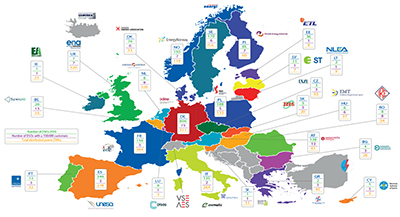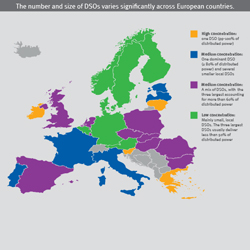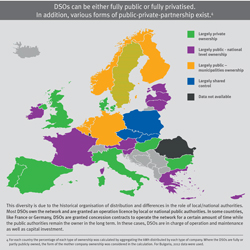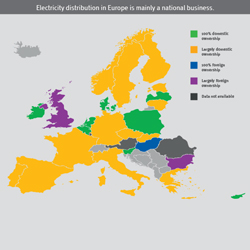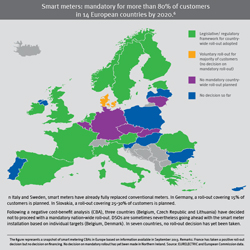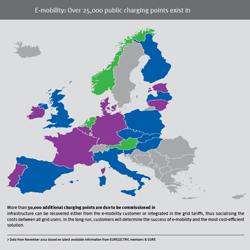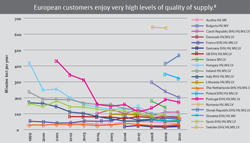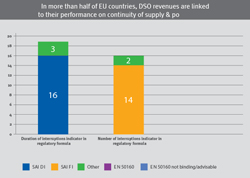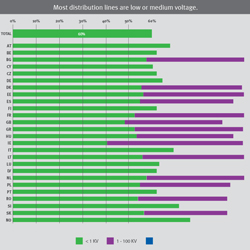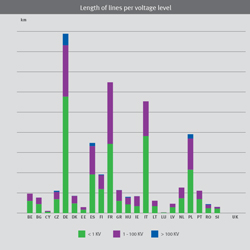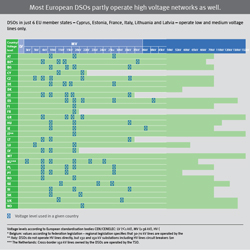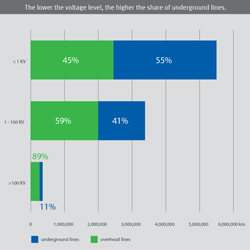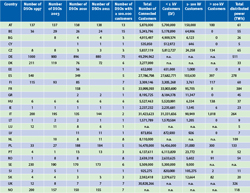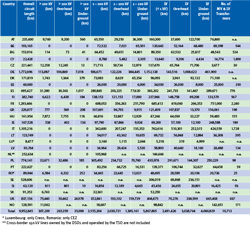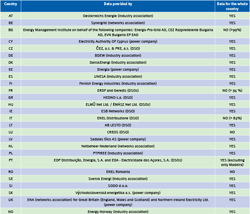DSOs have two main functions: they act as system operators and as neutral market facilitators
- 1. System operators: DSOs secure a reliable flow of electricity through their network to their customers. They constantly develop and maintain their networks to ensure that the networks operate efficiently and with high levels of system security, reliability and quality.
- 2. Market facilitators: DSOs are also required to provide non-discriminatory access to their networks for other system users, like power generators or service providers. They will increasingly move beyond their traditional role of “building and connecting” towards “connecting and managing”. In many countries, DSOs also own and manage metering infrastructure, organise supplier switching, or act as an information hub by storing and providing metering data.
Electricity distribution is a natural monopoly. DSOs are therefore fully regulated companies: their allowed revenue is determined by national regulatory authorities.
DSOs that are part of a vertically integrated company are obliged to comply with conditions of legal, functional and accounting unbundling as laid down in the Third Energy Package.*3 This applies to more than 190 DSOs with 100,000 and more end users.
DSOs serving less than 100,000 connected customers can be exempted from the requirements of both legal and functional unbundling. In order to find other economies of scale, such small DSOs often integrate horizontally with other activities, such as distribution of water, gas or heat.
*3 Articles 26 and 32 of Directive 2009/72/EC